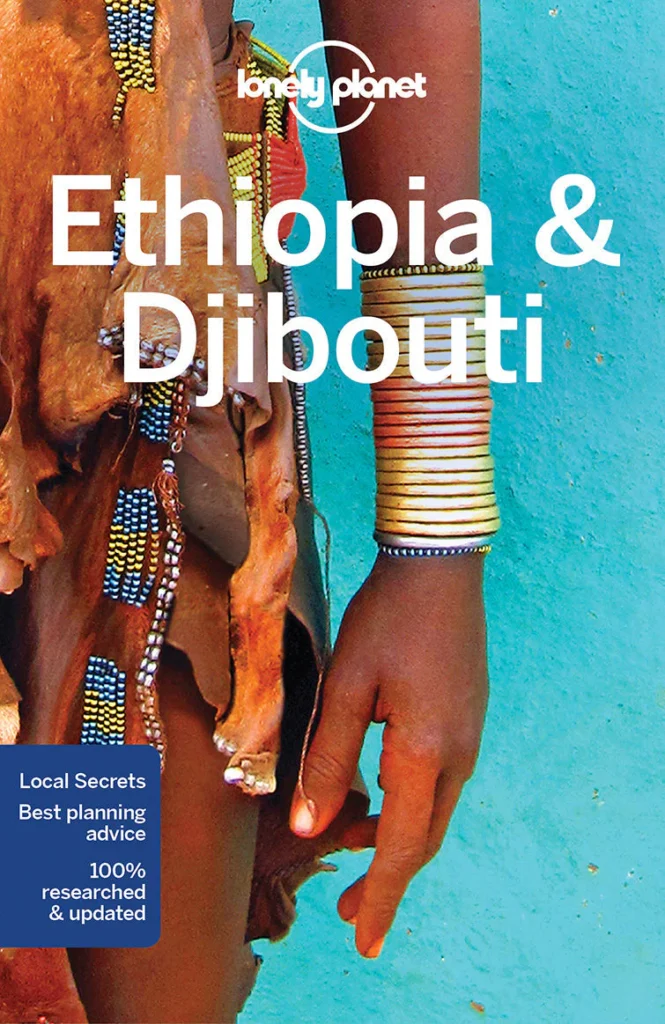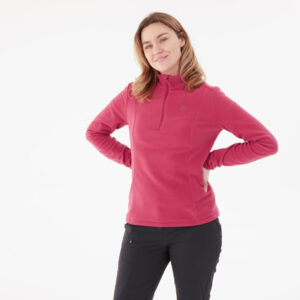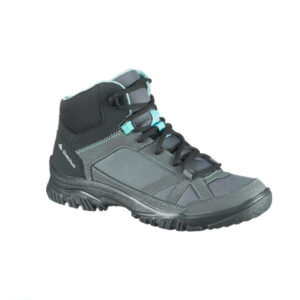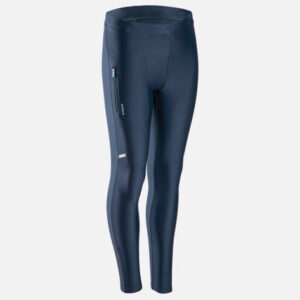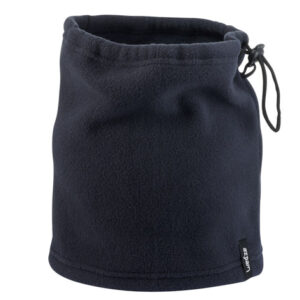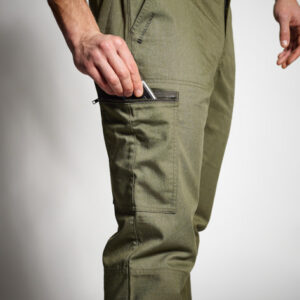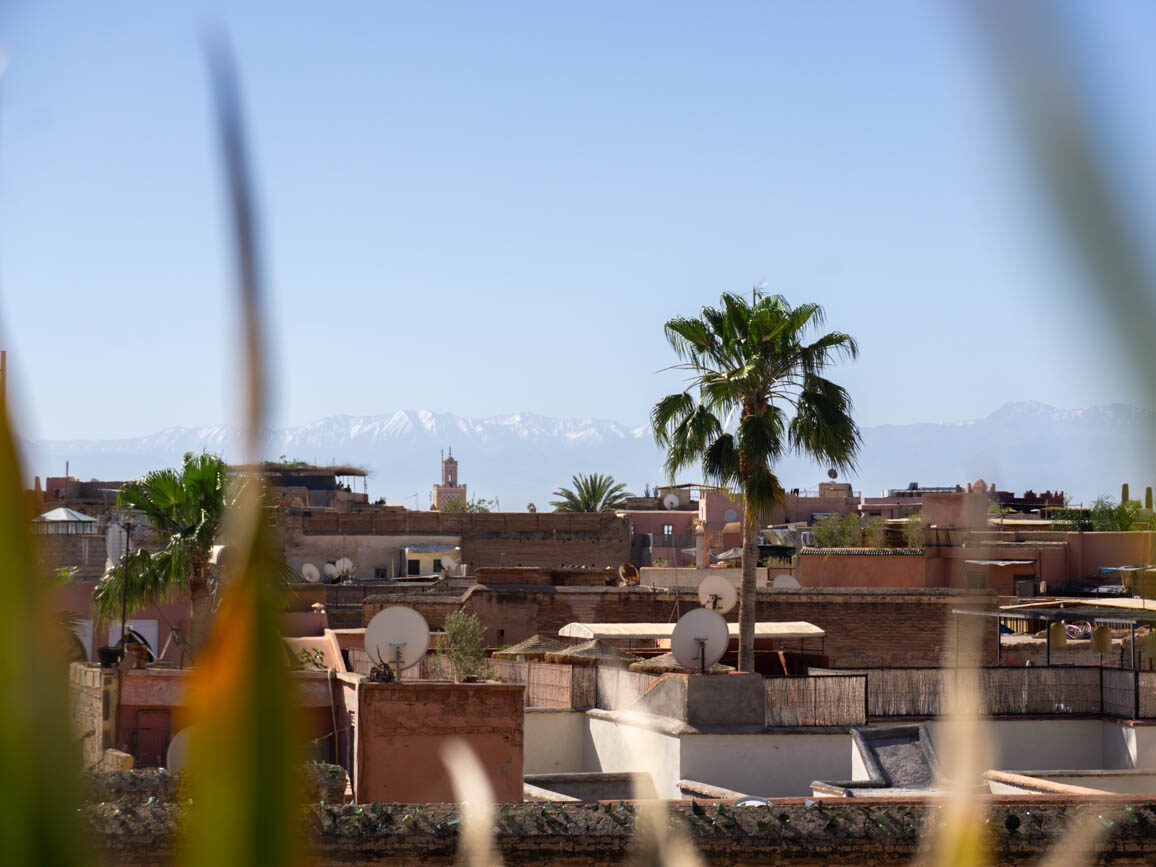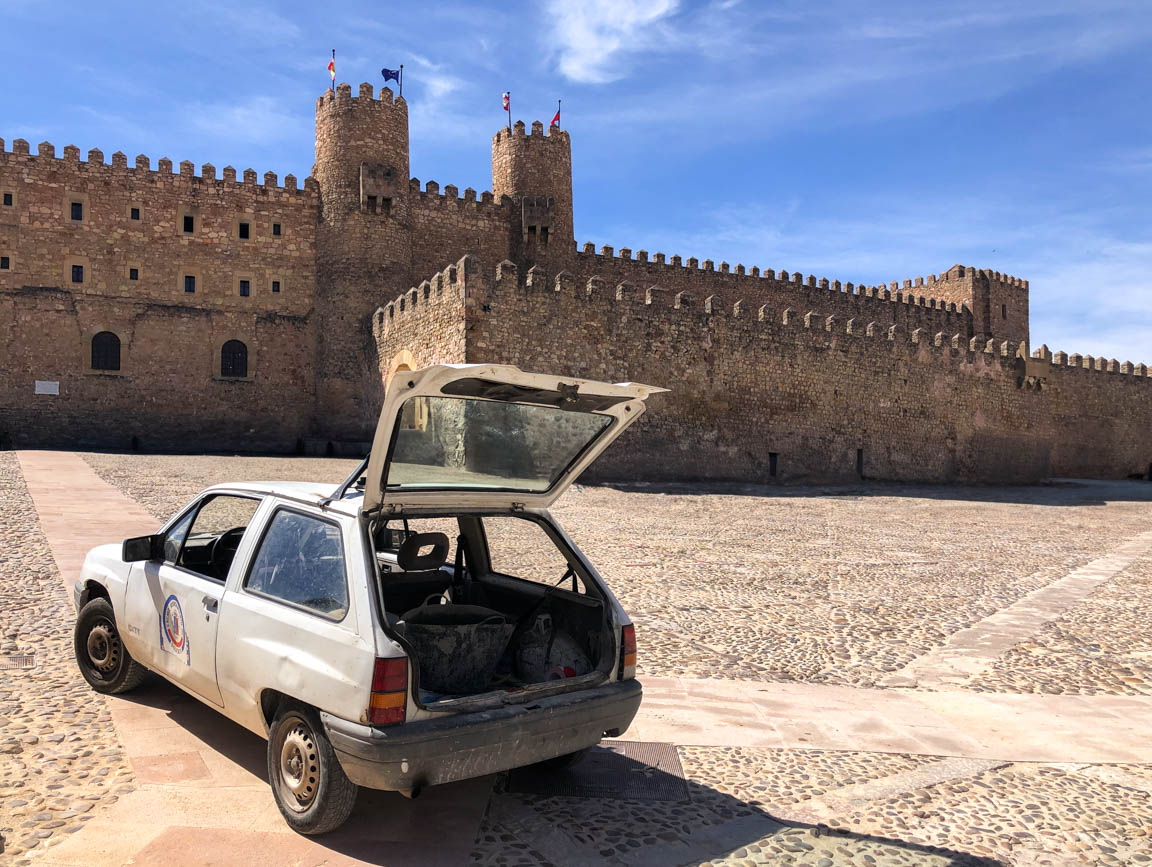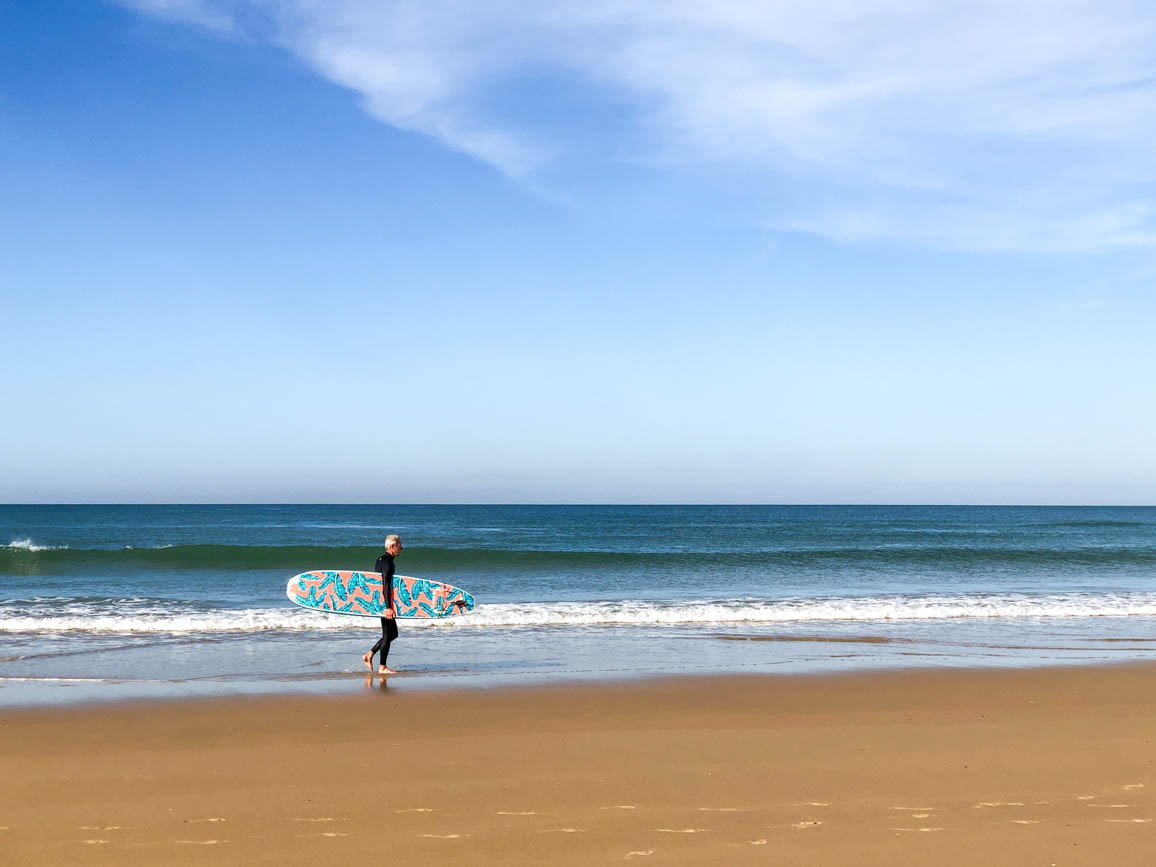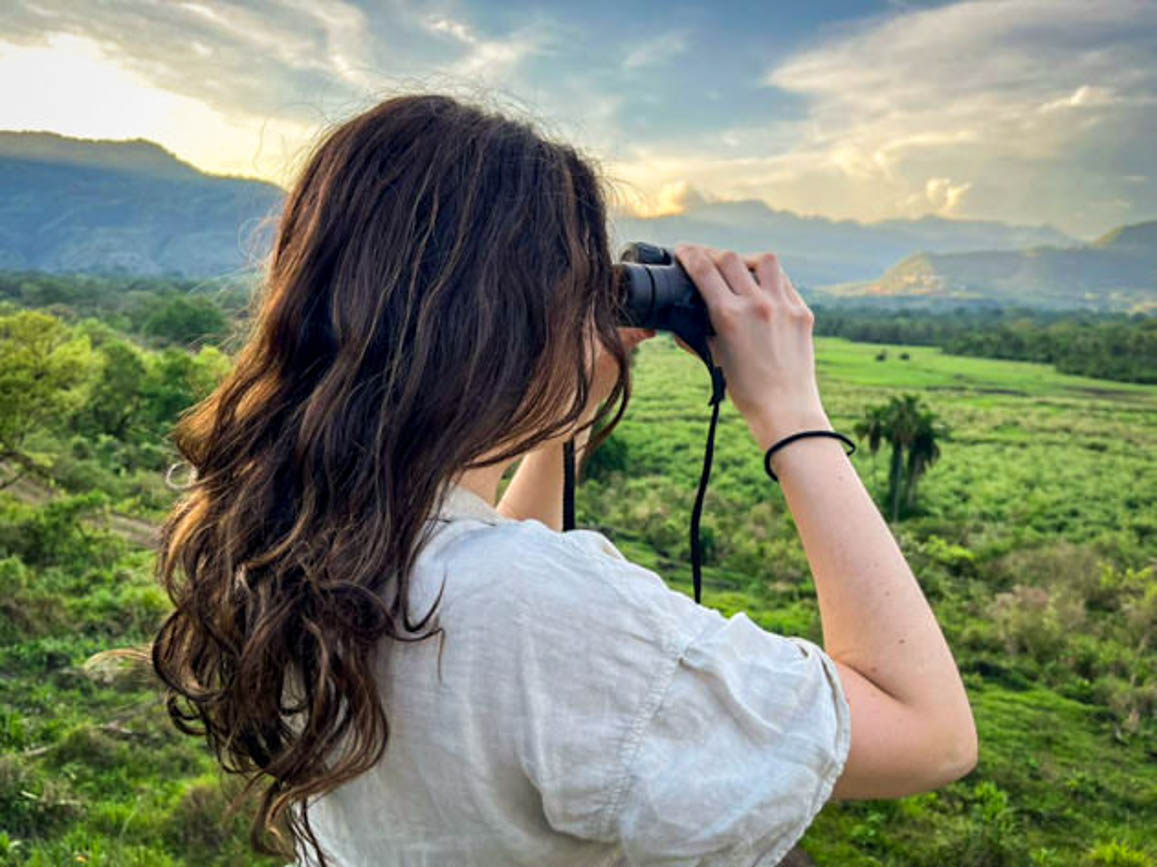
Exploring southern Ethiopia: ethnic tribes of the Omo Valley & safaris in national parks
Welcome to the south of Ethiopia, a fascinating part of the country that will take your breath away as soon as you discover its main cities, spot incredible wildlife in safaris across the national parks and interact with the ethnic tribes of the Omo Valley! In this travel guide, I´ll share our 10-day itinerary throughout southern Ethiopia, including what to see and do, where to eat and stay, and how to get around. At the end of this post, you will also find a map featuring all the locations mentioned here. Are you ready to join the adventure?
***
Disclaimers:
- I visited Ethiopia, including the southern part of the country, with three girlfriends during the months of March and April 2023. This post features the latest information available to this date.
- Please note that this post includes some affiliate links. This means that, at no additional cost for you, I earn a commission if you make a purchase. In case you have any question about the companies advertised here or my status as an affiliate, please do not hesitate to contact me.
- You can find my Ethiopian stories and adventures under these folders on Instagram (Ethiopia, Ethiopia II, Ethiopia III).
***
Throughout the trip, I used this Ethiopia & Djibouti guidebook by Lonely Planet to plan our stay and make the most out of it. I hope you’ll find it helpful too!
Browse my Ethiopia destination page for more content about this fascinating country!
Ethiopia itinerary in 2 weeks & travel tips
Ethiopia trip highlights: my top 7 experiences
Lalibela, a mystical UNESCO World Heritage site
What to do in Addis Ababa, the bustling capital of Ethiopia
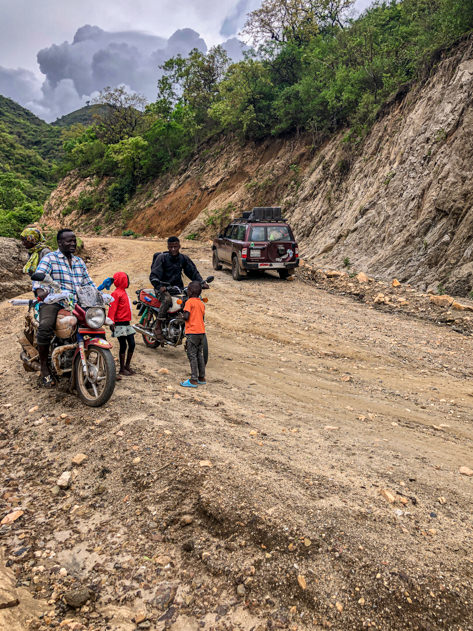
Our 10-day itinerary throughout southern Ethiopia
During our two-week trip across Ethiopia, we devoted most of our time (ten days) to exploring southern Ethiopia. In that vast and diverse area of the country we interacted with some local tribes in the Omo Valley such as the Ari, Mursi, Bana, Kara or Dorze, and we admired incredible wildlife -from elephants and baboons, to warthogs and guinea fowls- in beautiful national parks (Chebera-Churchura, Maze, Mago, Nech Sar and Abyata-Shalla). It was truly memorable and the perfect blend of cultural and outdoor activities!
Let’s see our southern Ethiopian itinerary in more detail:
- Day 1: road trip from Addis Ababa to Jimma (around 350km in 8h30). Overnight at Awetu Grand Hotel.
- Days 2 and 3: Chebera-Churchura National Park. Accommodation at Chebera Safari Lodge.
- Day 4: Maze National Park. Overnight camping.
- Day 5: arrival to Jinka, our base to explore the Omo Valley, and visit to the Ari tribe. Stay at the Nassa Hotel for two nights.
- Day 6: Mago National Park and interaction with the Mursi tribe.
- Day 7: drive to Turmi and exchange with the Kara tribe. Overnight at Buska Lodge.
- Day 8: drive to Konso and boat trip around the Nech Sar National Park. Accommodation at Paradise Lodge in Arba Minch.
- Day 9: visit of Arba Minch, lake Abaya and the Dorze tribe before arriving to Hawassa. Overnight at Lewi Hotel Piazza.
- Day 10: Hawassa, Abyata-Shalla National Park and return to Addis Ababa, before flying back to Istanbul and then off to Bilbao.
For further information, you can refer to the section below on ´how to get around southern Ethiopia´.
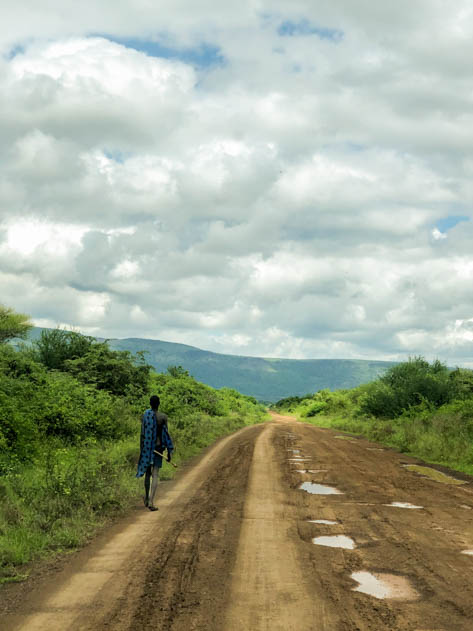
What to see and do in southern Ethiopia
Main cities in the south of Ethiopia
During our road trip exploring southern Ethiopia, we didn’t have much time to devote to sightseeing major cities. In any case, I would advise you to keep your expectations low in terms of landmarks as these towns were rather uninteresting. 😉
The main cities that we visited are listed below, in chronological order. For further information on where we ate and slept in each of these, kindly refer to the sections underneath ´where to eat in southern Ethiopia´ and ´where to stay in the south of Ethiopia´.
- Jimma
- Jinka
- Turmi
- Arba Minch
- Hawassa
Let’s learn more about what to see and do in each one of them!
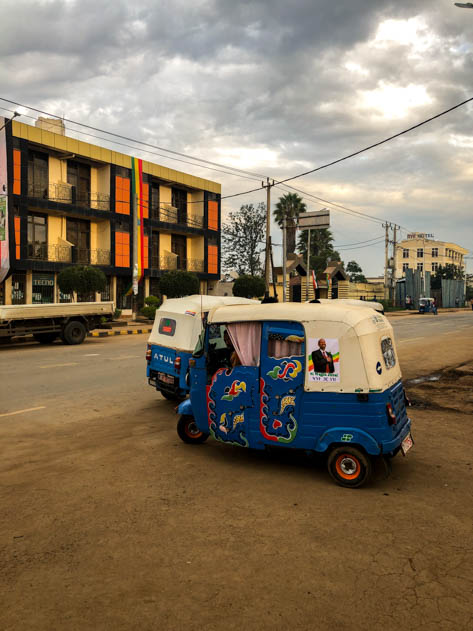
Jimma, the largest city in western Ethiopia
Jimma (known as ጅማ in Amharic) was our final stop after driving from Addis Ababa on the first day of our trip. To give you an idea of the challening conditions of the roads in the country, it took us around eight hours and a half to go over 350 kilometers (including two hours of being stuck in traffic when leaving the capital city).
On our way to Jimma, we crossed rural cities and villages such as Waliso, Goro W Shewa, the Gibe river, or Saja. Along the road lined up with traditional huts (‘ tukul‘ ), we admired the authentic Ethiopian countryside: roaming animals, kids walking to school and colorful markets.
As we headed southwest, the landscape turned greener, mosques from local Muslim communities started to pop up (attesting to the fact that the Oromia region is predominantly Muslim) and we saw beautiful African tulip trees and solanums.
Located in the southwestern part of Ethiopia, Jimma is the largest city of the Oromia Region, with more than 128.000 people living here as of 2024, many of which are university students. This bustling town and the surrounding region, once under the powerful reign of Oromo monarchs, is believed to be where the coffee plant was first cultivated, and the area remains one of Ethiopia’s main coffee growing hubs.
Here´s what to see and do in (the rather uninteresting city of) Jimma. In fact, we didn´t have much time to sightsee since we arrived there at night, and left the next morning after a short stroll near our hotel.
- Boye dam: located 5 kms southwest of Jimma, this a great spot for birdwatching. You will also find nearby caves and hot springs.
- Jimma Museum: this local museum features seven small rooms displaying objects such as a throne that was used by Emperor Haile Selassie.
- Municipal buildings: check out the fascist architecture built during the Italian occupation.
- Palace of Abba Jiffar (Masaraa Abbaa Jifaar): lying in the northern outskirts of Jimma, it offers panoramic views of the city. Built in the 1880s, this palace was inhabited by King Jiffar (1852-1933), the last independent monarch of the Kingdom of Kafa, who is also buried at the foot of a nearby hill. Some highlights in this historical landmark include a private family mosque, the library or the throne hall. This heritage site is a symbol of Oromia cultural identity. Given its precarious condition, the palace of Aba Jifar is currently being restored.
- Signaling its status as the birthplace of Ethiopian coffee (of the wild Arabica coffee variety to be precise), you will find an immense coffee pot planted in the main roundabout of the city of Jimma. Indeed, legend has it that a shepherd called Kaldi noticed that his goats became very energized after eating certain berries. When he reported this finding to the monks of a local monastery and they threw the berries to the fire, they appreciated the smell and found that the drink kept them alert. From there, it spread out to Turkey and Italy and the legend of coffee was born around the world. In case you´d like to learn more about Ethiopian coffee, you can visit the Kafa Biosphere Reserve near Bonga, featuring an interesting coffee museum.
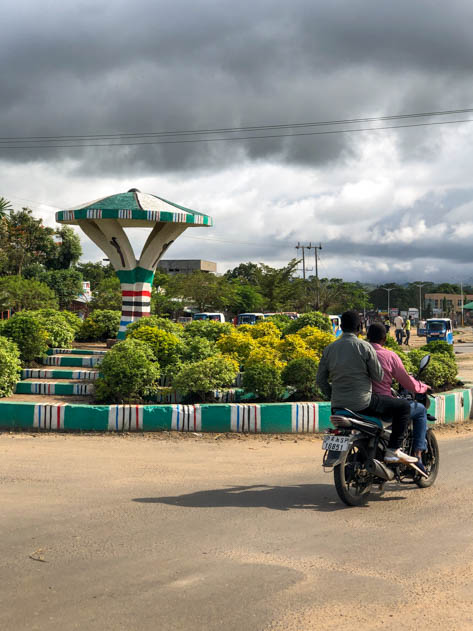
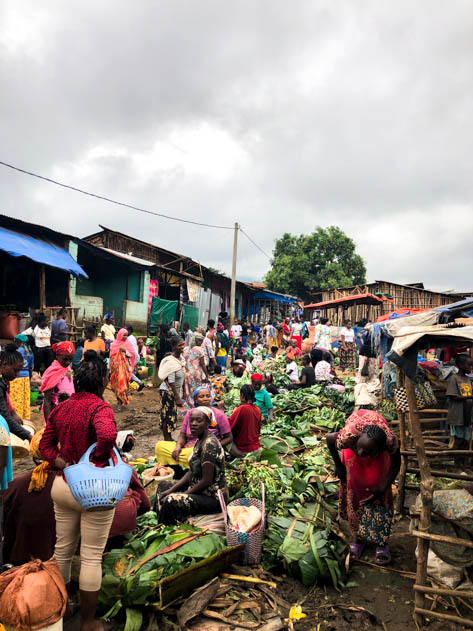
Jinka, the best Ethiopian city to get around the Omo Valley
After an early morning game drive in Maze National Park, we headed to Jinka (also known as ጂንካ in Amharic). This market town in southern Ethiopia is located in the hills north of the Tama Plains, and is the capital of the South Omo Zone within the Southern Nations, Nationalities, and Peoples’ Region.
Given its strategic location, Jinka is the ideal gateway to visit the Mago National Park as well as some of the African tribes living in the area. For more information, feel free to refer to the section below entitled ‘African tribes of the Omo Valley’.
What I noticed in Jinka is that locals mostly use motorbikes, tuk-tuks (bajajs) or just walk, compared to Addis Ababa, where cars are more common. Some people ride bikes instead, mainly in the countryside.
This is what to see and do in Jinka (Ethiopia):
- Market: Saturdays are market day in Jinka, even though you can also browse the endless, colorful stalls any other day of the week (we actually visited on a Tuesday and it was rather lively). The Jinka market is the biggest in the region, attracting numerous ethnic groups such as Ari, Banna, Bashada or Mursi.
- South Omo Research Center and Museum: we loved visiting the interesting exhibit displaying ethnographic objects and lots of information about the tribal culture in the region. You can also watch a few films to learn more about these fascinating ethnic groups.
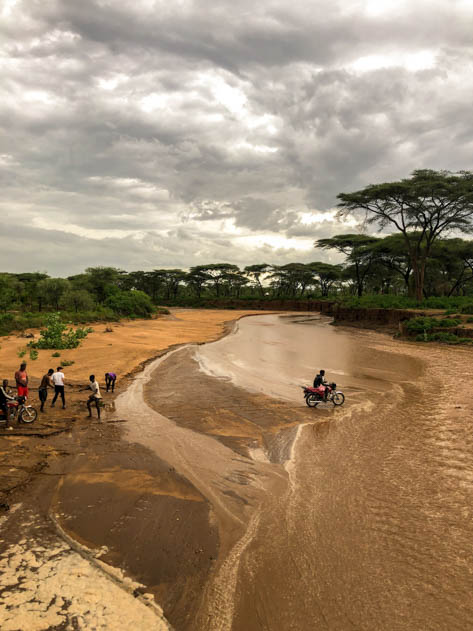
Turmi, the gateway to the Hamer tribe
After leaving Jinka early in the morning, we headed to our next stop: Turmi (ቱሪም). On our way there, we stumbled across a few fascinating young boys from the Banna tribe gracefully walking on stilts around Key Afar. We also saw Hamer tribe members with their distinctive hairstyles by the road. In Alduba, we stopped for coffee with fried bread (´buna´ served with ´bobolino´) before passing by Dimeka. Finally, we made it to Turmi for lunch, where we ate at our hotel (Buska Lodge).
In the afternoon, we visited the Kara tribe although we had a hard time coming back. Unfortunately, it had started raining hard and we couldn’t cross the Keske river with our 4×4. After waiting with some other locals for a while, we took matters in our own hands and crossed by foot. Then, a couple of young boys, Oita and Torbin, took the four of us plus our guide Ahmed on their motorbikes and kindly gave us a ride back to the hotel. They became our heroes! 🙂
In other news, the main attraction in Turmi is the market, happening on Mondays (more touristy) or Thursdays. Other activities you may do while in Turmi include visiting the Hamer tribal groups that live in the surrounding area and, if you´re lucky, catching a glimpse at their fascinating ceremonies such as jumping over the bulls or dancing (known as ´evangadi´). You could also do a daytrip to Omorate, near the Kenyan border.
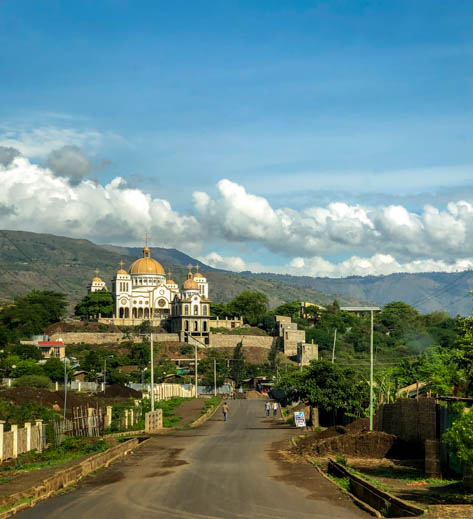
Arba Minch, the main city in southwestern Ethiopia
After leaving Turmi early in the morning, the original idea was to drive to Yabelo (also spelled Yebelo) in order to game drive around the Yabelo Wildlife Sanctuary, which is mostly known for the Burchell´s zebras. However, given the drought situation in the area, our guide decided to head to Konso and then Arba Minch instead.
On our way there, we passed by the Weito river, the stone walled terraces and fortified settlements in the Konso highlands that are considered a UNESCO site, Lake Chamo and Nech Sar National Park. After seeing Nile crocodiles and hippopotamus there, we hiked for an hour and half to Paradise Lodge, our accommodation overlooking the city of Arba Minch.
Surrounded by misty mountains and two of the largest lakes in the Rift Valley, here´s what to do in Arba Minch (አርባ ምንጭ, literally meaning forty springs), the main town in southwestern Ethiopia:
- The Arba Minch Crocodile Ranch is the most popular attraction in the city, where you will find lots of crocodiles which were either hatched from eggs collected in the lakes or pulled out in their early days and reared on the farm. Crocs are fed twice a week, which is a spectacular experience.
- Explore the Nech Sar National Park, where you may spot Nile crocodiles, hippopotamus, lions or Burchell´s zebras.
- Interact with the Dorze tribe living in the mountains near Arba Minch (for further details, head to the section ´African tribes of the Omo Valley´)
- The Arba Minch Medhanialem church is a massive Orthodox temple that can be seen from far away. We passed by it on our way to visit the Dorze tribe in the nearby mountains.
- Visit the two lakes next to the city of Arba Minch: lake Abaya and lake Chamo. Whereas lake Abaya is the second largest lake in the country and is known for its reddish waters and high concentration of crocodiles, lake Chamo is much smaller. Both lakes are connected by Egzer Dildiy, also known as God’s bridge.

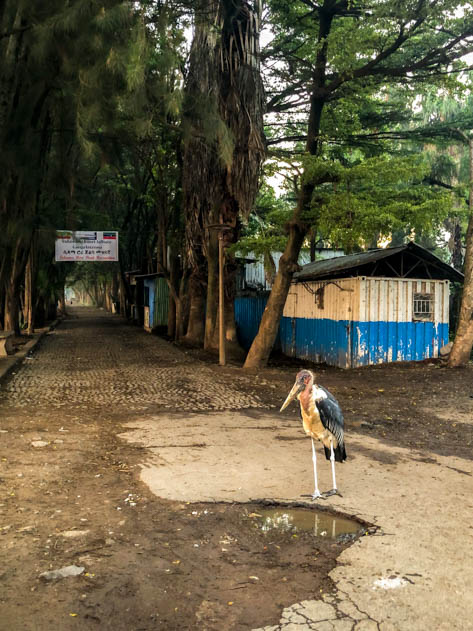
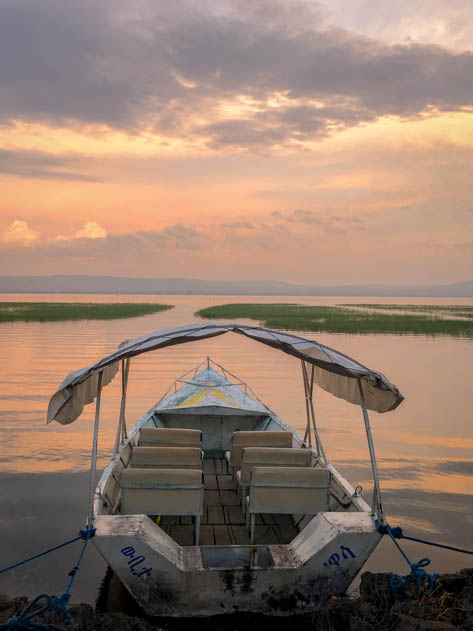
Hawassa, the lake city
After visiting the Dorze tribe near the city of Arba Minch, we headed to Tebela and Sodo before arriving to Hawassa (also spelled Awasa or Awassa; አዋሳ in Amharic). Nicknamed the city of eternal love, Hawassa is the capital of both the Sidama Region and the Southern Nations, Nationalities, and Peoples’ Region. As of 2024, this big town is home to over 133.000 people.
Located by lake Awasa, here are the top things to do in the Ethiopian city of Hawassa:
- Lake Awasa is the main attraction in town thanks to its idyllic mountainous backdrop and local fishermen on their papyrus rafts. You can either walk around the lake, ideally at sunrise (as we did) or sunset, or book a one-hour boat trip that would take you to Tikur Wuha to see hippos.
- The fish market is another must-see in Hawassa and is the perfect place to spot local fishermen unloading freshly caught tilapia and catfish. Beware of the imposing marabou storks and the mischievous vervet monkeys wandering around!
- Other places worth mentioning in Hawassa include the Amora Gedel Park and the Sidamo Monument representing a false banana leaf.
Safaris in national parks across southern Ethiopia
During our trip across the south of the country, we visited a total of five national parks listed below in chronological order. Keep on reading to discover each one of them in more detail!
- Chebera-Churchura National Park
- Maze National Park
- Mago National Park
- Nech Sar National Park
- Abyata-Shalla National Park
Many of these parks offer safaris as part of their activities. Visitors can choose a given number of so called ‘game drives’ focused on viewing wildlife during the safari itinerary. These outings typically take place early in the morning or towards the evening since animals tend to be less active during the day.
As for any trip, especially if you´re traveling to a foreign country, safety and health precautions are of the outmost importance. For extra peace of mind, you can calculate how much you would pay for your health insurance with the SafetyWing widget below.
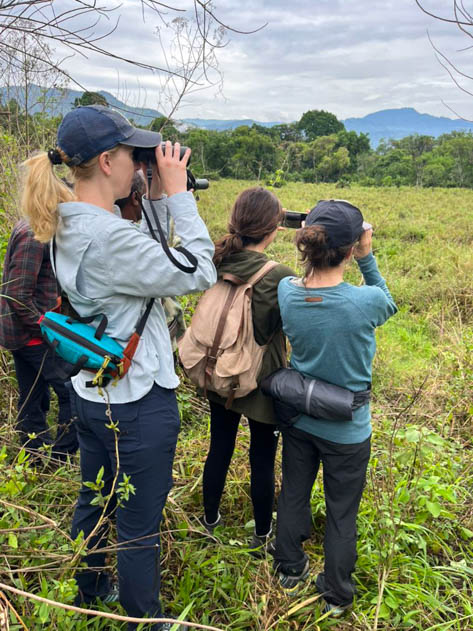
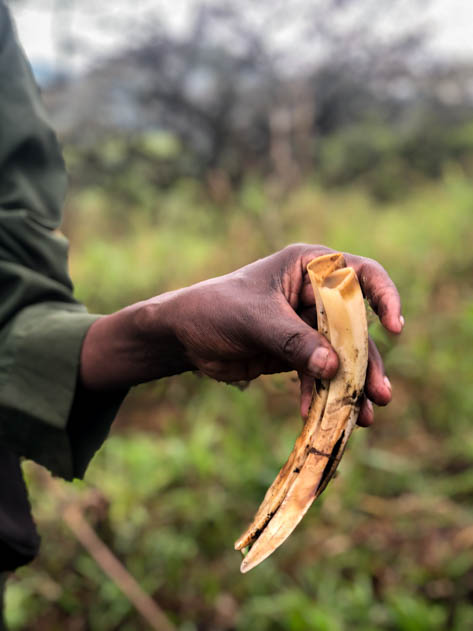
Safari travel tips
Here are a few travel tips you may want to consider ahead of your safari:
- For your own safety, it is common practice for game drives to include the protection of rangers as part of the safari package. They are armed and typically come in groups of two. These scouts are highly knowledgeable about their designated national parks and can provide you with a lot of insights about the wild animals living there.
- Given the fluctuating temperatures and the unpredictable weather when out in the wild, my advice would be to dress in layers. Pack long sleeve shirts and pants (preferably in beige, brown, green or khaki to blend with the landscape) as well as trekking shoes to protect yourself from mosquitoes, mud, fallen branches and the like. Should you need some inspiration for what to wear in a safari, you can shop the look below based on the Decathlon products I used during this trip.
- In terms of price, I hear that Ethiopian safaris might be half the price compared to more popular African destinations such as Kenya, Tanzania or South Africa. However, it seems that this cheaper cost comes at the expense of the accommodation facilities and safari services in general being worse than in other countries. In any case, since this was my first safari experience and I had no prior benchmarks, I was greatly surprised by the number of animals we saw. That being said, safaris don’t come cheap (feel free to refer to the section ‘how to get around southern Ethiopia’, where I break down the cost of this trip).
- Normally, when going on a safari, you would use a 4×4 vehicle. One of our favorite memories was to sit carefully on top of our jeep during the game drives. Truly epic indeed!
- Often times, local communities live within the national parks. This is a unique opportunity to interact with them during your visit and get a better understanding of their way of life. For example, during our stay in Chebera-Churchura, we visited a few households and bought honey from the villagers.
- When packing, make sure to bring your binoculars. Believe me, you don’t want to miss any details of the beautiful creatures out there!
- You can often camp in designated areas of the national parks after paying a fee. Alternatively, you could stay in a nearby lodge or live an authentic experience with a local community for a few days.
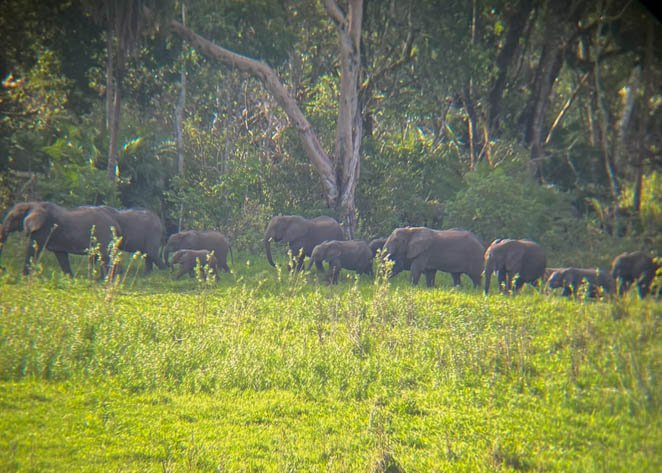
Chebera-Churchura National Park
After spending our first night of the trip in Jimma and passing by Cheta and Chebera, we headed south to Chebera-Churchura National Park. After a five-hour drive admiring the lush scenery, we finally arrived to our accommodation in Chebera Safari Lodge (see under ‘where to stay in southern Ethiopia’ for further details) in time for lunch. At the entrance of the park, we met with some playful kids, probably belonging to the 60 households or so that live within the premises.
Chebera-Churchura is a newly established national park in Ethiopia, and it is home to rich wilderness. Some of the species you might find here include larger mammals such as African elephants (over 400 in different herds), buffalos, greater kudus or warthogs and endless varieties of birds. The Zigna River -an important tributary of the Omo River-, several lakes, waterfalls, hot springs and natural caves are an added attraction.
Over the two days we spent in Chebera-Churchura National Park, we went on a couple of game drives and we also hiked to a crater lake and a waterfall around the Konta area. During those outings, we spotted a surprising number of elephants (including cute baby elephants, which quickly became my favorite 🙂 ), baboons, buffalos, hippopotamus, ravens and warthogs.
A feature that I liked in this park, and that we didn’t see again throughout our trip, were the watchtowers to admire both the scenery and the wild animals in a panoramic way.
This was my first time going on a safari and I absolutely loved it. Being surrounded by wild animals in the middle of a vast natural park was truly magical; what an epic experience!
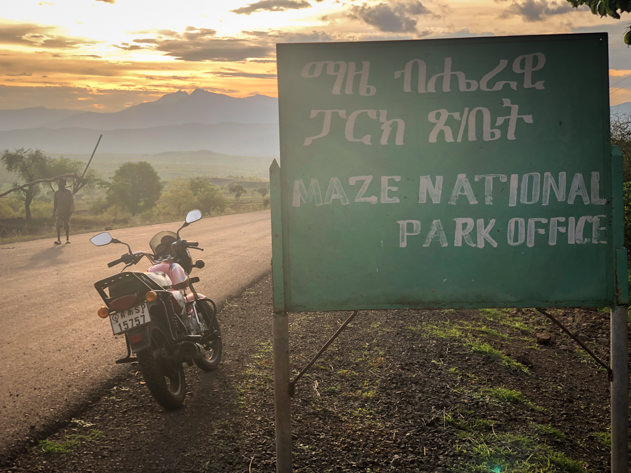
Maze National Park
After exploring Chebera-Churchura for a couple of nights, we headed southeast to Maze National Park. Established in 2005, this park is located in the Southern Nations, Nationalities, and People’s Region of Ethiopia.
It took us the whole day to get there and during the 9-hour drive journey, we passed by Cheta, the Gilgel Gibe III dam, Sorto, Soddo and Selam Ber. Luckily, we made it in time for a magical game drive around sunset. The next morning, after camping overnight, we went on an early morning game drive as well (the wake up call was at 5.30 am!).
During our outings, we spotted Guinea fowls, oribis, rollers, starlings and Swayne’s hartebeests, even though other species in the park include Bohor reedbucks, buffalos, olive baboons, serval cats or warthogs. We were told that we might see lions as well, but unfortunately we didn’t see any. To be honest, the idea of finding them made me a bit anxious, I’m not going to lie. 🙂
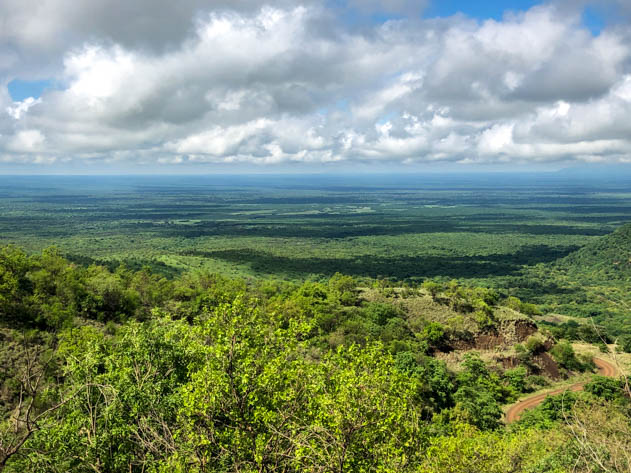
Mago National Park
Established in 1979, Mago National Park is located in the Southern Nations, Nationalities, and Peoples’ Region and is divided by the Mago River, a tributary of the Omo River.
We accessed the park with Abebe, a local guide from Pioneer Ethiopia Tours. The main reason of the visit was to interact with the Mursi tribe, one of the various ethnic groups living in this area of the Omo Valley. To be honest, the experience was intense to say the least. For more information, you can refer to the section on ‘African tribes of the Omo Valley’ below.
During our drive and walk around the tribal village, we also spotted wild, colorful animals such as baya weavers and their peculiar nests, bee eaters, bulbuls, colobus monkeys, dik-diks, and kingfishers. Other species housed in the park include Burchell´s zebras, buffalos, cheetahs, giraffes or leopards. However, our outing in Mago National Park was cut short because it started raining and we decided to return to the city of Jinka.
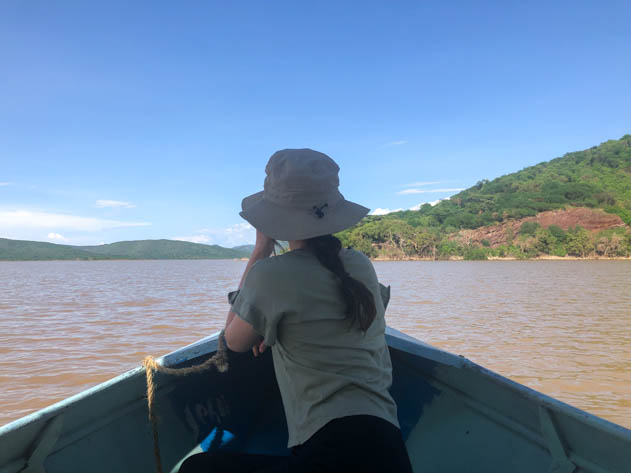
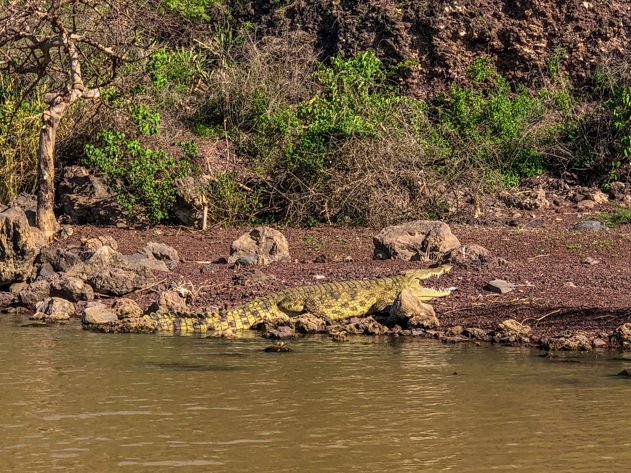
Nech Sar National Park
On our way from Turmi to Arba Minch, we stopped by Nech Sar National Park (also spelled Nechisar; meaning ´white grass´ in Amharic). Located between lake Abaya and lake Chamo, this park is home to Nile crocodiles, hippopotamus, lions or Burchell´s zebras.
We took a 2-hour boat trip with our guide Tebabu during our visit to Nech Sar National Park, during which we spotted huge crocodiles and hippos. Some locations worth mentioning within the park include the Crocodile Market, the Nechisar plain or the forty springs after which the city of Arba Minch is named.
You may camp in the Nech Sar National Park although basic services are lacking. Find convenient accommodations options under my section ´Where to stay in the south of Ethiopia´.
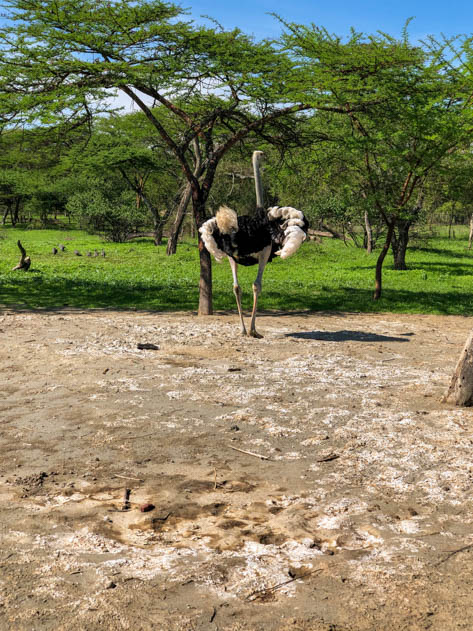
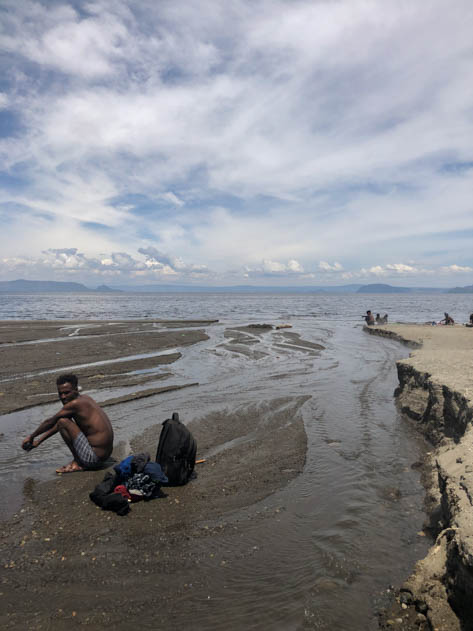
Abyata-Shalla National Park
During the final day of our trip, on our way from Hawassa to Addis Ababa, we passed by Shashamane (the capital of the rastafari community in Africa), the Abijatta-Shalla National Park and Ziway.
Nestled in the heart of the Rift Valley, the Abyata-Shalla National Park is located west of Lake Langano. The national park covers a vast area encompassing lake Abiata (set in a depression of 14 meters deep) and lake Shala (260 meters deep). There´s also a tiny lake nearby called lake Chitu.
We visited the park with our guide Mustafa. We started by spotting gazelles, Guinea fowls, ostriches and warthogs before driving to an overlook of the two lakes. From there, we hiked to lake Shala, where we saw flamingos and locals washing their clothes in sulphurous hot springs.
After our visit to the park, we ate lunch in Ziway and then drove on the Addis – Adama Expressway. This was the first proper road we had seen in two weeks and we couldn´t believe it! 🙂
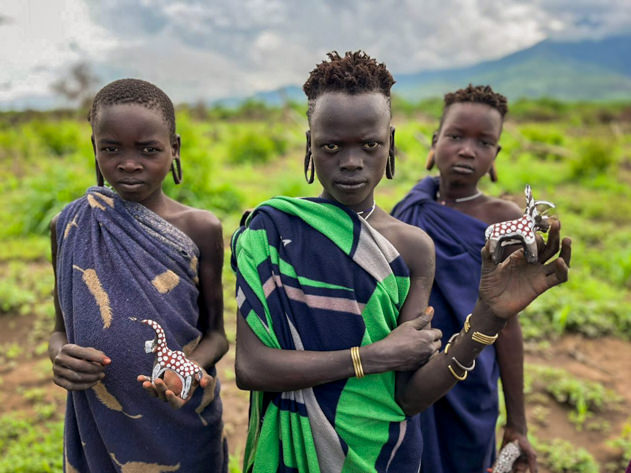
African tribes of the Omo Valley
The Lower Omo Valley is a melting pot of cultures in which to discover fascinating ethnic tribes. This remote corner of Ethiopia has been a cultural crossroads for millennia. The area is home to 16 ethnic groups, many of which are distinctly different from their neighbors.
From the Banna smoothly walking on stilts, to the Karo with their painted bodies or the Mursi with their lip plates, all these African tribes guard ancient traditions that run deep, many embracing animistic beliefs. If you’d like to learn more, the South Omo Research Center and Museum in Jinka is a great place to get started.
Visiting their markets and villages is a good way of understanding their way of living, despite the mistaken belief that these diverse ethnic groups live on the margins of modern society. Nevertheless, be prepared to question your entire beliefs system and even feel shocked or disturbed at times.
Another aspect worth mentioning is that interacting with these tribes can often be turned into a ‘human safari’. Regularly, groups of tourists come and go snapping pictures of the villagers, buying some homemade souvenirs and leaving shortly afterwards. A way to support responsible travel and avoid falling in that tourist trap is, for instance, to agree with your local guide to interact with the tribal group before even taking pictures, by asking them genuine questions when touring their village. Another alternative for a more authentic experience and a deeper engagement with the local community would be to spend a couple of nights with a given tribe. During your interactions, despite your obvious curiosity and surprise, remember to be respectful with locals. For example, always ask for permission when taking pictures.
Below is a description of some of the African tribes we interacted with during our journey throughout southern Ethiopia, although additional tribes such as the Dassanech, Nyangatom or Surmi (to name a few) exist.
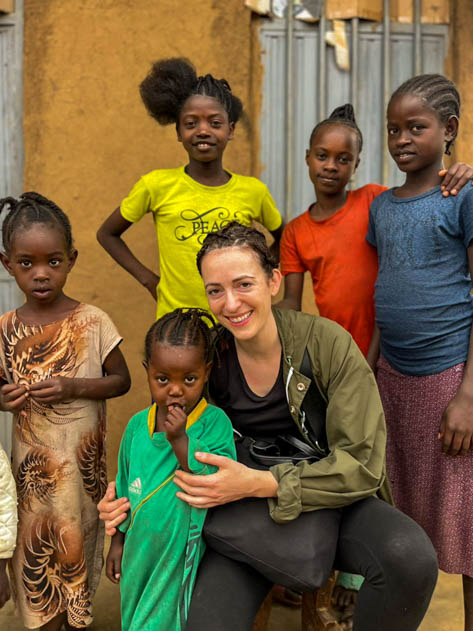

Ari tribe
The Ari (or Aari, ኣሪ in Amharic) tribe is the most numerous in the southern Omo Valley, with almost 300.000 people living mostly around the city of Jinka. This was the first tribal group we interacted with during our visit to the Omo Valley. And to be honest, that novelty is probably what made us enjoy this one the most.
We met with our local guide Alex in the outskirts of Jinka before bumping into some kids of the Ari tribe on our way up to their tribal village. As soon as we got there, we went from one place to another with excited children all around us: they elaborately braided our hair in a flash, we danced together and we tried their food and drinks during the tour, including injera, bananas or araki (an alcoholic beverage). Aris here grew avocados, Arabica coffee, mangos and papaya, although they are also known for their honey and sorghum.
We couldn´t help having mixed feelings at the end of this first visit, which would only grow stronger the more tribes we met. On the one hand, we had fun interacting with the kids and villagers, learning how the community lived. But on the other hand, we felt that the whole tour was somewhat staged in order to get money from us tourists, and that made us feel rather uncomfortable.
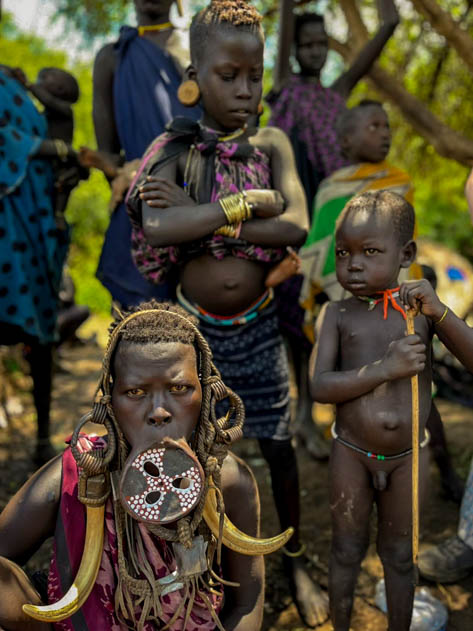
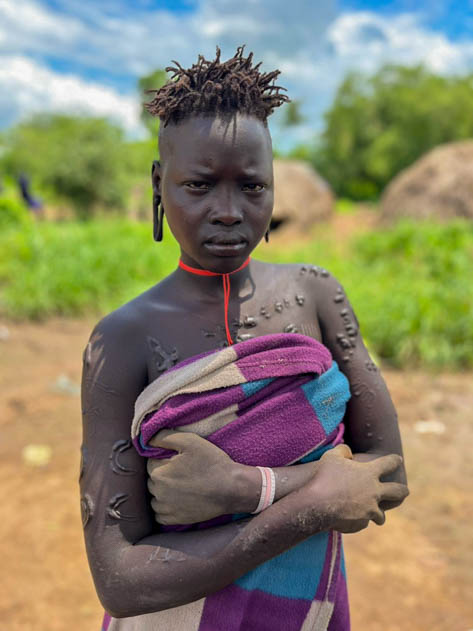
Mursi tribe
Around 7.500 Mursi live within the Mago National Park, near the Omo river. They are mostly nomads and pastoralists, although they also practice agriculture. Stick fighting, lip plates and body scarring feature among their best-known traditions.
When a Mursi girl reaches puberty and approaches marrying age, they typically have their lower lip pierced so a wooden or clay plate of increasing size can be inserted. The bigger the plate, the higher the woman´s status is within her tribe. The same goes for scarification. Similarly, young girls pierce large holes in their ears from the age of five.
In our experience, interacting with the Mursi tribe was way more intense than with the Ari the day before. Upon arrival, they painted the face of one of us (it was beautiful!). But after that, it seemed like the whole village, especially kids, were on our heels. They were insisting that we buy their handicraft and take pictures during the whole visit, which was rather embarrassing and pushy. In the end, I bought some cute clay figurines.
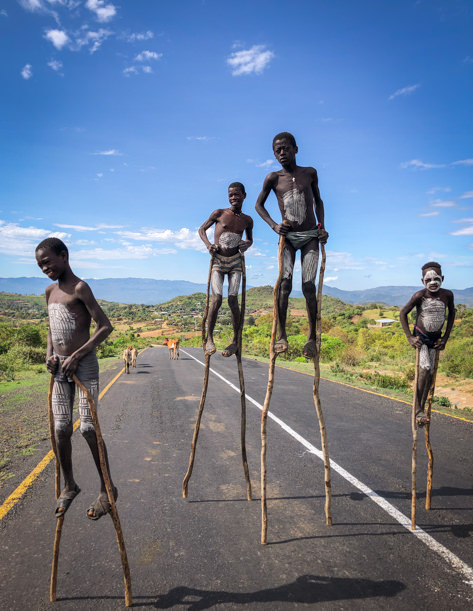
Banna tribe
While driving towards the city of Turmi, we stumbled across a group of young boys gracefully walking on sticks in the middle of the paved road. Their bodies were covered in white clay. Since we couldn´t continue further (and also out of curiosity), we had to step out of our vehicle to interact with them.
The Banna tribe (also referred to as Bana, Bena, Benna, or Banya), which accounts around 27.000 members, is mostly settled around Key Afar. They are closely related to the Hamer, and they practice farming as well as hunting.
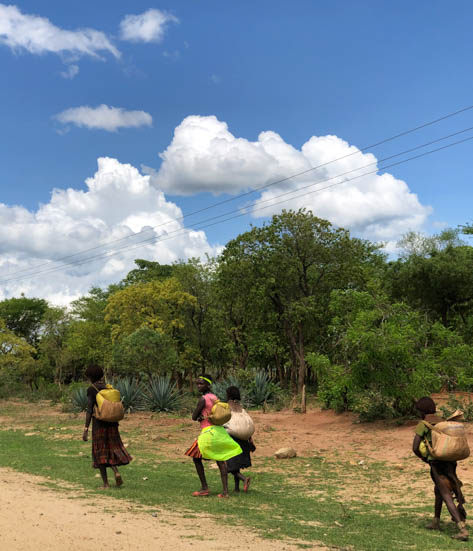
Hamer tribe
The members of the Hamer tribe (also known as Hamar or Hammer) can be found around Dimeka and Turmi. With a population of over 45.000, they subsist thanks to farming and herding.
We spotted a few Hamer on our way to Turmi because of their distinctive hairstyles. Women typically curl their hair into plaits with a mixture of ochre clay, resin and water called ´goscha´ and wear copper bracelets, while men often wear a topknot covered in clay adorned with ostrich feathers.
The ceremony of jumping over the bulls is also worth mentioning. When young boys from the Banna and Hamer tribes reach adulthood, they must perform a ritual consisting in jumping completely naked over fifteen to thirty bulls arranged on their sides in a row. If they fall, the women harass them and whip them. If they succeed, they must do it all over again, at least three times.
Dancing ceremonies known as ´evangadi´ are popular among both Banna and Hamer too.
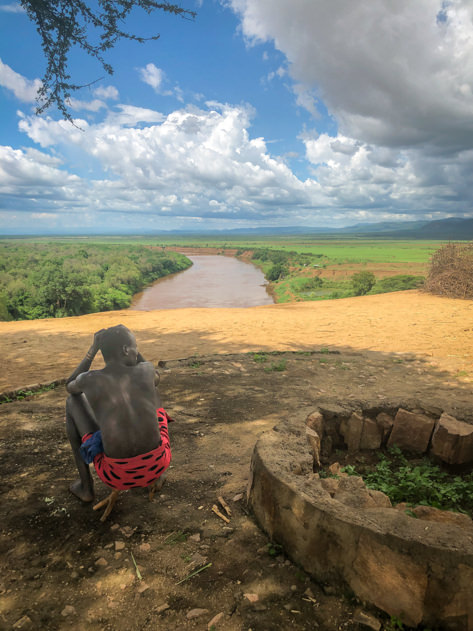
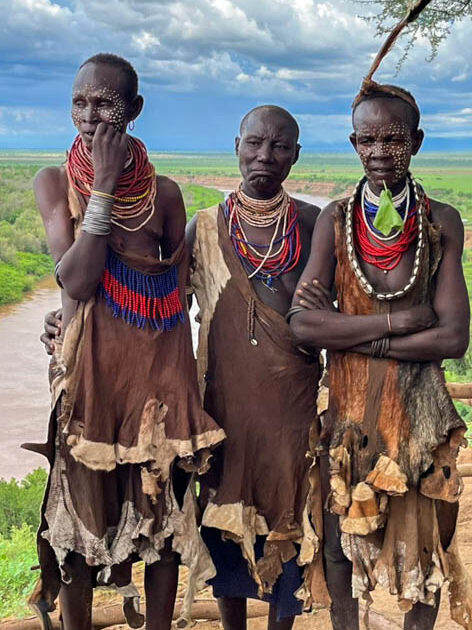
Kara tribe
The 5.000 members belonging to the Kara tribe (also known as Karo) are located northwest of Turmi, by the imposing Omo river. Most of them are devoted to farming and herding. They are polygamists and are related to the Hamer.
The Kara master the art of body and face painting, usually with white clay.
On our way to visit the Kara tribe from Turmi, we saw lots of curious termite mounds, but also colorful birds such as hornbills and bee-eaters.
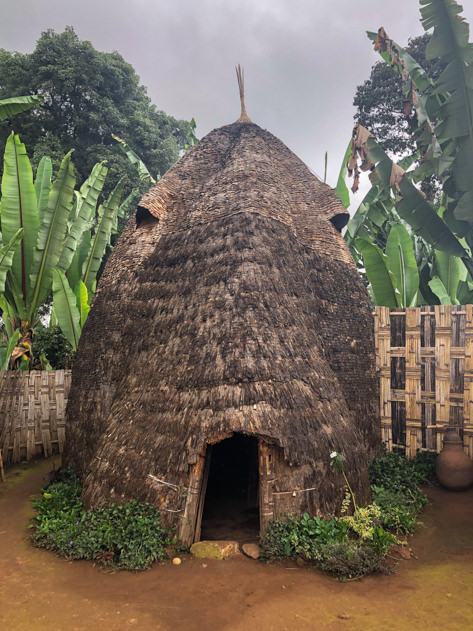
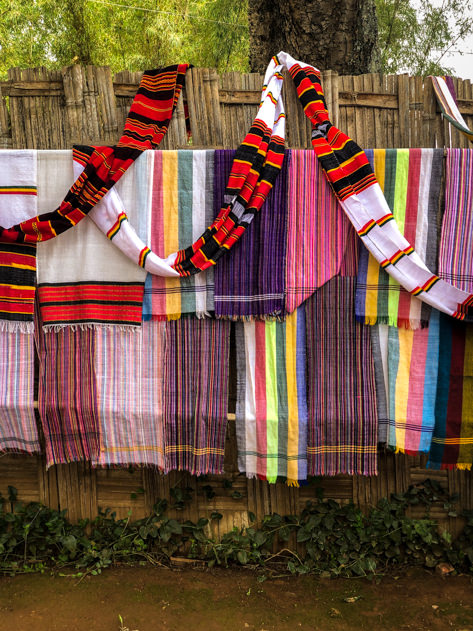
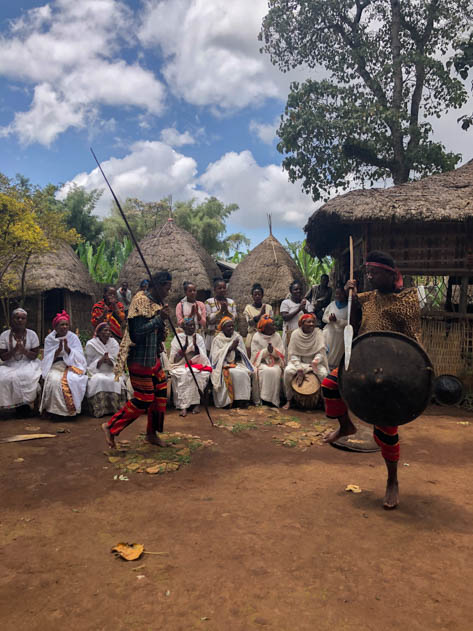
Dorze tribe
Located in the misty mountains northwest of Arba Minch, the Dorze tribe accounts for 49.000 members. This tribal group is well known for their weaving, although they also cultivate the land (they grow potato, coffee, barley or wheat).
We visited a Dorze village with a local guide called Mekonen. He showed us the Dorze cabins first, which are made of bamboo and false banana (ensete). They can be up to 12 meters high and resemble the face of an elephant. The funny thing is that these cabins can be easily moved from one place to another and last a long time (between 60 and 80 years, often passing through generations). Even if termites attack the cabins, the bottom part of the structure can be cut off and therefore shortened. We even went inside the cabins and I was surprised to find how dark they were. Despite their height, they have limited space because they only use the ground level, and even so, they manage to fit a Dorze family as well as their cattle.
After touring a cabin, Mekonen took us around the Dorze village, where we saw how tribal members were weaving cotton, producing clay pots and preparing kocho, a fermented bread made with ensete that can be served with honey or a spicy sauce known as ´data´. We also got to try a distilled drink, bought local scarves, saw kids in an outdoor class and took part in a traditional dancing ceremony.
The most recommended locations to interact with the Dorze tribe include the village of Hayzo and Chencha, where a market is held on Tuesdays and Saturdays.
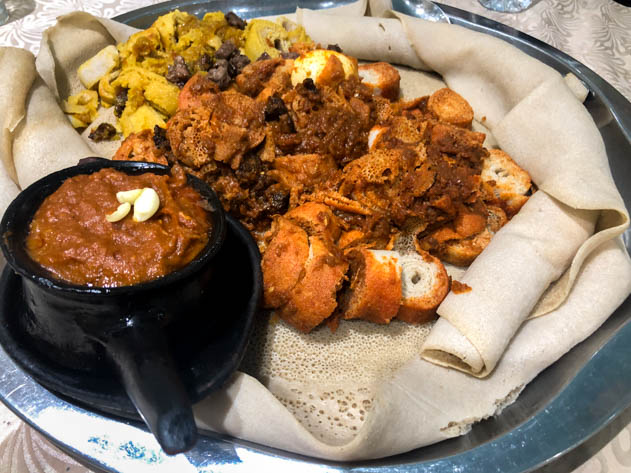
Where to eat in southern Ethiopia
Mentioned below are all the restaurants where we ate during our itinerary, listed in chronological order. In case you need some help deciphering the Ethiopian food and its traditional dishes, feel free to refer to my destination page.
- Negash Resort: this was our first foodie stop while we drove from Addis Ababa to Jimma on the first day of our itinerary. Located in Wolliso (also spelled Waliso), this 3-star hotel features a bar & restaurant, as well as a spa. They also offer outdoor activities such as horse riding or relaxing by the swimming pool. We ordered injera with shiro, fish goulash with basmati rice and a margarita pizza, although our lunch in the terrace was interrupted at times by playful vervet monkeys.
- Chebera Safari Lodge (in Chebera-Churchura National Park): chef Aman took great care of us during our stay and cooked delicious food that was served in buffet style.
- Abebe Zeleke International Hotel (in Sodo): we stopped at this hotel restaurant for lunch twice during our trip, first on our way from Chebera-Churchura National Park to Maze National Park, and then on the return journey from Arba Minch to Hawassa. The first time, we ordered mango juice, spaghetti with tomato sauce, injera with shiro, fish goulash with vegetable rice and fries, along with coffee served with tena adam leaves -an aromatic plant. We ate in the garden and we really enjoyed the food. The second time around, I had an upset stomach so I ate plain rice to avoid further risks.
- Besha Gojo restaurant (in Jinka): as soon as we arrived to the city, we had lunch in the pleasant outdoor terrace of this restaurant serving traditional Ethiopian food. It is centrally located and highly popular among locals.
- Engocha Cafe & Restaurant (in Jinka): during our stay in the city, we had breakfast and dinner here as it was literally next to our hotel. We loved the cozy atmosphere and the food, an Ethiopia meets the West kind of thing. They also served beers, which was great to debrief in the evenings before going straight to bed. 🙂
- Buska Lodge (in Turmi): during our stay in this Ethiopian village, we dined at our hotel. The staff were really nice and the food was great too (upon arrival, we had injera with shiro tegamino, watermelon, and coffee with milk).
- Kanta Lodge (in Konso): we had lunch in this beautiful restaurant on our way to Arba Minch, and we ordered injera with shiro tegabino, steamed fish, an avocado salad, a mango juice and a caffè latte.
- Paradise Lodge (in Arba Minch): we dined and had breakfast in the terrace of the Chamo Restaurant & Bar, one of the two restaurants located in our hotel. We had a delicious dinner consisting of a chicken barbecue pizza, a mango and avocado salad and fried fish. However, two of us started to feel sick that night, probably because of a caffè latte we had taken in Konso earlier that day. Luckily, it only lasted 24 hours and we were completely fine during our last day (thank God we had brought medicines for an upset stomach and the like! 🙂 ).
- Lewi Hotel Piazza (in Hawassa): we had dinner and breakfast here, although I wasn´t feeling well upon arrival because of an upset stomach and my energy levels were at an all time low. Thankfully, I woke up refreshed the next day, and I could start eating some things.
- Bethlehem Hotel (in Ziway): this is where we had the last lunch of our trip. Pleasant terrace to eat outdoors and good food.
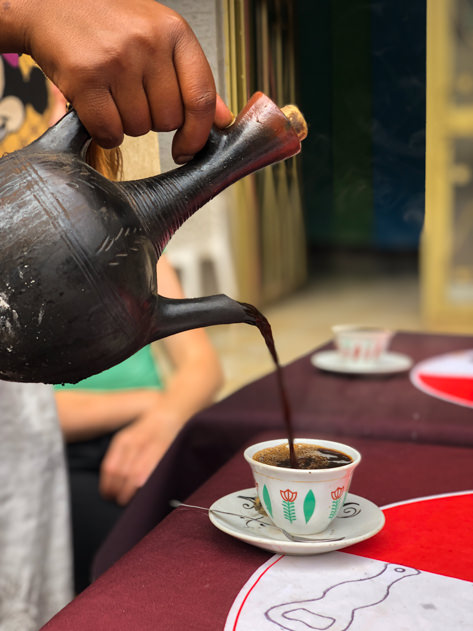
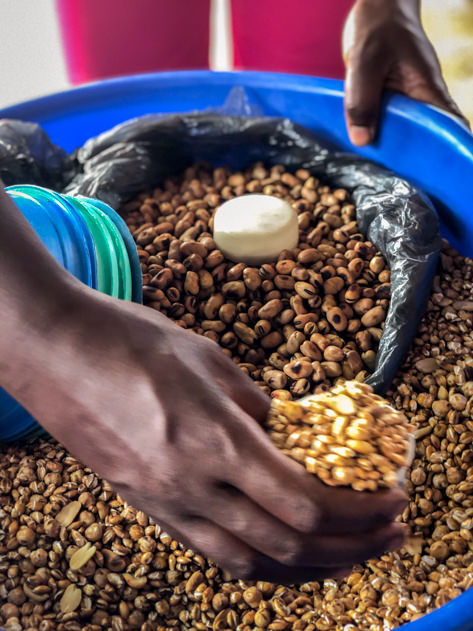
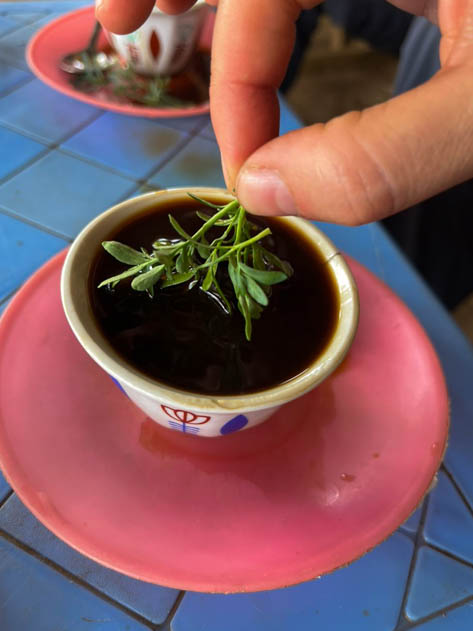
In addition to the restaurants listed above, these are some additional suggestions that I took from my trusted Ethiopia & Djibouti guidebook by Lonely Planet:
- Jimma: Central Jimma Hotel, Jimma Degitu Hotel, Wolde Argaw & Family Hotel.
- Jinka: Redu Cafe & Restaurant.
- Turmi: none worth mentioning.
- Arba Minch: Arba Minch Tourist Hotel Restaurant, city market, Fruit Supermarket, Lemlem Bar & Restaurant, Soma Restaurant, Zebib Café & Snack.
- Hawassa: Dolce Vita Bar & Restaurant, Hi-Life Bar & Grill, Luwa Bar & Restaurant, Pinna, Time Cafe, Venezia, What a Burger.
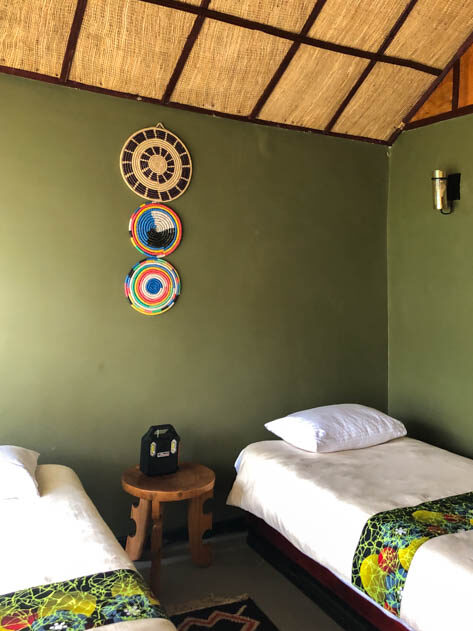
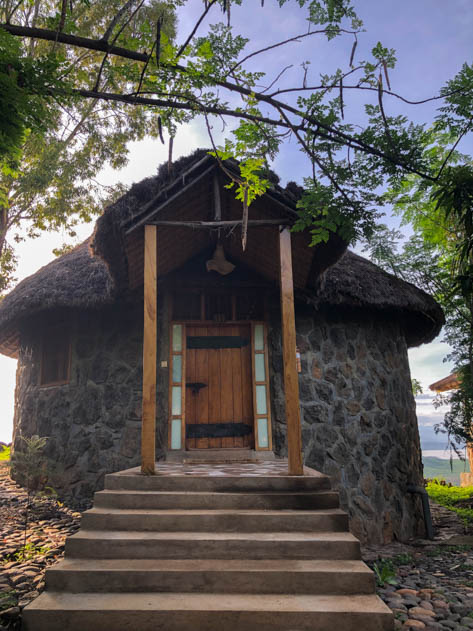
Where to stay in the south of Ethiopia
Mentioned below are all the hotels and places where we slept during our itinerary, listed in chronological order. Most of them were rather simple, yet functional accommodations. Note that in many of these Ethiopian cities, water and power outages are common, especially during the rainy season (from June to September). Internet connectivity can be bad as well, unless you purchase a local SIM card.
- Awetu Grand Hotel (in Jimma): decent hotel where we slept the first night of our trip. We had the whole culinary experience here, since we had both dinner and breakfast at the hotel. We ordered injera with tegabino shiro for dinner, while we took Ethiopian coffee, bread, an omelet, and chechebsa for breakfast.
- Chebera Safari Lodge (in Chebera-Churchura National Park): we were lucky to be the only guests in this fabulous lodge and have it all to ourselves! We loved that the spacious, colorful cabins really blended with the lush scenery. Some memorable experiences in this accommodation included chatting by the fire in the evening or sitting in our front porch to see pouring rain at night. The food was also excellent thanks to chef Aman!
- Overnight camping (in Maze National Park): our tour guide, driver and rangers set up our camping site for the night and started a campfire. We had take-away dinner, played Uno cards and went to the sleeping bags in our tents. To be honest, we didn’t sleep much because it rained overnight and we heard some loud noises during the night – maybe from some wild animal? Luckily, the rangers were patrolling the campsite over night and we woke up safe and sound. 🙂 The next morning, we left for an early game drive and we even had a delicious impromptu breakfast in the middle of the national park!
- Nassa Hotel (in Jinka): we spent two nights here to explore the nearby Mago National Park and the tribes of the Omo Valley, including the Ari and the Mursi. The rooms and the accommodation in general were modest, but the unexpected bonus was having the Engocha Cafe & Restaurant next door.
- Buska Lodge (in Turmi): located just one kilometer away from the village, this is probably the best accommodation in the Omo Valley and we truly loved even if we just spent a night here. Our tukul rooms were spacious, the staff was really friendly, we also enjoyed dining there and I even had a shoulder and face massage for 17$. There´s a camping facility in the lodge premises as well. And we met a couple of Spaniards who were birdwatching throughout Ethiopia!
- Paradise Lodge (in Arba Minch): overlooking the vast extension near lake Abaya and lake Chamo, this is the most exclusive accommodation in town. We loved our one night stay here in comfortable Konso cabins. Hotel services include a spa, a gym, a pool as well as two restaurants.
- Lewi Hotel Piazza (in Hawassa): this is where we spent our last night of the trip before heading to Addis Ababa. We had dinner and breakfast here, although I wasn´t feeling well upon arrival because of an upset stomach. All I wanted to do was go straight to bed! Thankfully, I woke up refreshed the next day, so we took advantage of the central location of the hotel to walk around the nearby Lake Awasa.
Do you like my content? Subscribe to my newsletter to stay tuned.
In addition to the hotels listed above, these are some additional suggestions that I took from my trusted Ethiopia & Djibouti guidebook by Lonely Planet. For your ease of reference, I sorted them by budget range based on the main cities we visited during our itinerary throughout southern Ethiopia.
- Arba Minch: Arba Minch Tourist Hotel ($$), Forty Springs ($), Mora Heights ($$), Romi Hotel ($), Swayne´s Hotel – now Emerald Resort ($$), Zebib Pension ($).
- Chebera-Churchura National Park: tourists are allowed to stay at the park headquarters, where a simple camp with toilet facilities is available.
- Hawassa: Circle of Life Hotel ($), Haile Resort ($$$), Hawassa Lakeview Hotel ($$), Hotel Pinna ($$), Lewi Resort ($$$), Tadese Enjory Hotel ($$).
- Jimma: Boni International Hotel ($$), Central Jimma Hotel ($$), Honeyland Hotel ($$), Wolde Argaw & Family Hotel ($).
- Jinka: Eco-Omo Lodge ($$$), Eyob Hotel ($), Goh Hotel ($), Jinka Resort ($$), Orit Hotel ($$).
- Turmi: Green Hotel, Kaske Mango Campsite, Turmi Lodge.
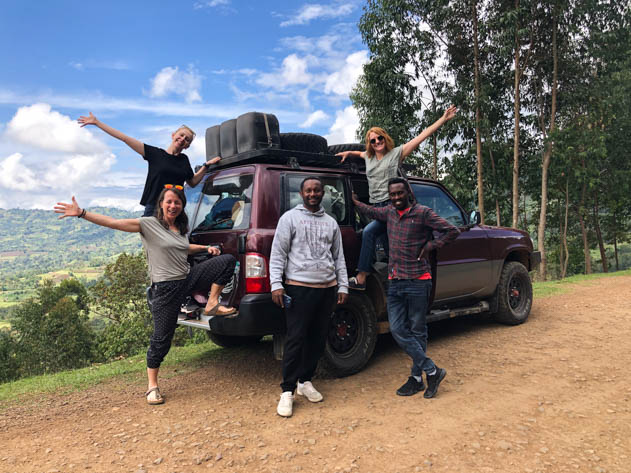
How to get around southern Ethiopia & best time to visit the Omo Valley
This vast region of southern Ethiopia is easily accessible by air, and the main cities are well connected. The major airports in the area include Abba Jifar Airport in Jimma, Arba Minch airport, Baco Airport in Jinka and Hawassa airport).
Getting around by bus or jeep throughout the Ethiopian south is a cheaper, alternative option but it typically takes way longer. You can easily spend days on end driving on sinuous roads that are often badly paved, or under construction (most probably by the Chinese), not to mention the unreliable public transport. Traveling in this area of the country certainly comes with its own challenges.
In our case, we opted for getting around by 4×4 with a guide and driver that we hired because it was the only feasible way to visit all these cities, national parks and tribes in one go. The flip side was that we easily spent half of the road trip driving from one place to another. Ethiopia is a big country and the roads are often in pretty bad condition, so beware of that when planning your itinerary!
As I mentioned, we booked a private tour to explore southern Ethiopia and the Omo Valley; I couldn´t recommend it enough despite the high cost (we payed 1.700$ each + tips; these services are usually quoted in USD). Our experienced guide was Ahmed Alo, the founder of Bale Mountains Tours. He spoke English but also Amharic, which was essential to navigate the tribal customs and traditions of the people we interacted with during the trip and then relay that information to us. On the other hand, our kind driver was called Aklilu (´Aki´) and he was in another league. He didn’t use Google Maps at all, and there were no signals on most roads!
Our experience discovering this part of the country with them was truly authentic and fascinating. Kudos to both Ahmed and Aki for bearing with us for 10 days! 🙂
Note that, in addition to our guide and driver, we hired a local guide in every tribal village and a couple of rangers in each national park that we visited. That is because you can´t enter those places freely and you must be accompanied at all times. In the case of the interactions with the etnic tribes in the Omo Valley, the entrance fee also typically includes a photography permit. You can always double check with your guide to make sure about the exact conditions of the deal and negotiate the price to avoid akward situations down the road.
Read this page for more inspiration around Africa!
Also note that the Omo Valley can be visited any time of the year, even though it is not advisable to do so during the rainy season, from June to September. Given the lack of appropriate infrastructure such as paved roads or bridges in the area, if there´s a heavy rainfall chances are you get stuck on your way somewhere (as it happened to us in Turmi) or the conditions become extremely difficult and dangerous to keep going. Therefore, if possible, try to time your visit to the Omo Valley in southern Ethiopia from October to March or April in order to avoid those unnecessary risks.
Map of our trip across the south of Ethiopia
For your ease of reference, below you will find a map depicting our 10-day itinerary exploring the south of the country, as well as suggested hotels and restaurants. Save it to plan your next trip!
Have you visited southern Ethiopia before? Have you ever been on a safari or interacted with ethnic tribes? How was your experience? I hope that this travel guide was useful to help you plan your trip. Feel free to leave your questions and comments below.
***
✈️ Curious to know where I’ll be traveling next? ✈️
Stay tuned by following me on social media (Facebook, Instagram, X) and subscribe to my newsletter for regular updates!
In the meantime, safe travels around the world!
***
| GET READY FOR YOUR NEXT TRIP! |
|---|
| Browse my travel resources page to plan your upcoming trip. |
| Feeling adventurous? Book any outdoor activities worldwide with Manawa! |
| Get medical or health insurance via SafetyWing for extra peace of mind. |
| Looking for sports equipment? Feel free to browse my Decathlon profile for inspiration. |
| Use the Anaya Touring or Lonely Planet travel guidebooks to plan your trip. They’re really comprehensive and helpful! |
| Create travel memories you’ll never forget! Book things to do, attractions and tours around the world with Get Your Guide. |

